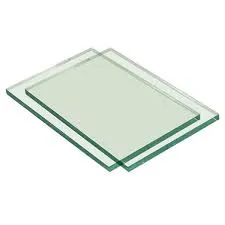Tinted Laminated Glass A Comprehensive Overview
In the realm of architectural design and construction, aesthetic appeal, energy efficiency, and safety are paramount considerations. Among the innovative materials that have gained popularity in recent years, tinted laminated glass stands out for its unique combination of functionality and style. This article delves into the characteristics, benefits, applications, and trends associated with tinted laminated glass.
Understanding Tinted Laminated Glass
Tinted laminated glass is a type of safety glass made by sandwiching a layer of tinted interlayer material between two or more layers of glass. This interlayer, usually made from polyvinyl butyral (PVB) or ethylene-vinyl acetate (EVA), not only provides tint but also enhances the glass's overall durability and safety. The tint can vary in density and color, allowing architects and designers to achieve a range of visual effects while also controlling the amount of light that penetrates through the glass.
Benefits of Tinted Laminated Glass
1. Enhanced Privacy One of the primary advantages of tinted laminated glass is its ability to provide privacy. The tint acts as a barrier to visibility from the outside, making it an ideal choice for residential homes, offices, and any building where privacy is a concern without sacrificing natural light.
2. UV Protection Tinted laminated glass effectively blocks harmful ultraviolet (UV) rays, which can damage furniture, flooring, and artwork over time. By incorporating this type of glass, property owners can protect their interiors while enjoying views and natural light.
3. Energy Efficiency The tinting of the glass can significantly reduce solar heat gain. This leads to lower energy consumption for air conditioning during hot months, contributing to a more sustainable and cost-effective building environment. Moreover, maintaining a comfortable indoor climate can enhance the well-being of occupants.
4. Safety and Security Due to its laminated nature, tinted laminated glass is less likely to shatter upon impact. If broken, the glass fragments adhere to the interlayer, reducing the risk of injury. This added layer of safety makes it an excellent option for public spaces, airports, and commercial buildings.
5. Aesthetic Versatility Tinted laminated glass offers a wide variety of color options and levels of opacity, which helps architects and designers create visually striking facades and interiors. Its smooth, modern appearance can be combined with other materials to produce stunning architectural elements.
tinted laminated glass
Applications of Tinted Laminated Glass
- Commercial Buildings Tinted laminated glass is commonly used in office buildings, shopping centers, and hotels. Its privacy benefits and energy efficiency make it a favored choice among corporate clients looking to enhance their workplace environments.
- Residential Homes Homeowners increasingly opt for tinted laminated glass for windows, patio doors, and skylights. This choice delivers privacy while enhancing the aesthetic appeal of their homes.
- Transportation Hubs Airports, train stations, and bus terminals use tinted laminated glass for security and visual impact. Passengers enjoy natural light without excessive glare, creating a pleasant waiting experience.
- Public Spaces Tinted laminated glass is ideal for public buildings such as schools and library facilities. It ensures safety for occupants while allowing for vibrant architectural statements.
Trends in Tinted Laminated Glass
Recent trends in tinted laminated glass focus on sustainability and advanced technology. With a growing emphasis on eco-friendly building materials, manufacturers are producing laminated glass that not only meets stringent energy codes but also incorporates recycled content. Furthermore, smart glass technologies are emerging, allowing users to control opacity and tint levels electronically, enhancing energy efficiency and comfort tailored to occupant needs.
Conclusion
Tinted laminated glass represents a compelling choice for architects, builders, and homeowners who prioritize safety, energy efficiency, and aesthetics. Its multifaceted benefits and versatile applications make it a valuable material in modern construction. As technology and design trends continue to evolve, tinted laminated glass is likely to play an increasingly prominent role in shaping the buildings of tomorrow. Whether used in a corporate setting, a private residence, or a bustling public venue, this innovative glass type seamlessly combines form and function, catering to a wide range of architectural needs.
 Afrikaans
Afrikaans  Albanian
Albanian  Amharic
Amharic  Arabic
Arabic  Armenian
Armenian  Azerbaijani
Azerbaijani  Basque
Basque  Belarusian
Belarusian  Bengali
Bengali  Bosnian
Bosnian  Bulgarian
Bulgarian  Catalan
Catalan  Cebuano
Cebuano  Corsican
Corsican  Croatian
Croatian  Czech
Czech  Danish
Danish  Dutch
Dutch  English
English  Esperanto
Esperanto  Estonian
Estonian  Finnish
Finnish  French
French  Frisian
Frisian  Galician
Galician  Georgian
Georgian  German
German  Greek
Greek  Gujarati
Gujarati  Haitian Creole
Haitian Creole  hausa
hausa  hawaiian
hawaiian  Hebrew
Hebrew  Hindi
Hindi  Miao
Miao  Hungarian
Hungarian  Icelandic
Icelandic  igbo
igbo  Indonesian
Indonesian  irish
irish  Italian
Italian  Japanese
Japanese  Javanese
Javanese  Kannada
Kannada  kazakh
kazakh  Khmer
Khmer  Rwandese
Rwandese  Korean
Korean  Kurdish
Kurdish  Kyrgyz
Kyrgyz  Lao
Lao  Latin
Latin  Latvian
Latvian  Lithuanian
Lithuanian  Luxembourgish
Luxembourgish  Macedonian
Macedonian  Malgashi
Malgashi  Malay
Malay  Malayalam
Malayalam  Maltese
Maltese  Maori
Maori  Marathi
Marathi  Mongolian
Mongolian  Myanmar
Myanmar  Nepali
Nepali  Norwegian
Norwegian  Norwegian
Norwegian  Occitan
Occitan  Pashto
Pashto  Persian
Persian  Polish
Polish  Portuguese
Portuguese  Punjabi
Punjabi  Romanian
Romanian  Russian
Russian  Samoan
Samoan  Scottish Gaelic
Scottish Gaelic  Serbian
Serbian  Sesotho
Sesotho  Shona
Shona  Sindhi
Sindhi  Sinhala
Sinhala  Slovak
Slovak  Slovenian
Slovenian  Somali
Somali  Spanish
Spanish  Sundanese
Sundanese  Swahili
Swahili  Swedish
Swedish  Tagalog
Tagalog  Tajik
Tajik  Tamil
Tamil  Tatar
Tatar  Telugu
Telugu  Thai
Thai  Turkish
Turkish  Turkmen
Turkmen  Ukrainian
Ukrainian  Urdu
Urdu  Uighur
Uighur  Uzbek
Uzbek  Vietnamese
Vietnamese  Welsh
Welsh  Bantu
Bantu  Yiddish
Yiddish  Yoruba
Yoruba  Zulu
Zulu 

